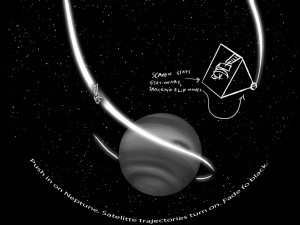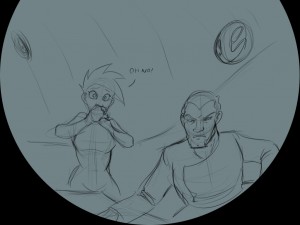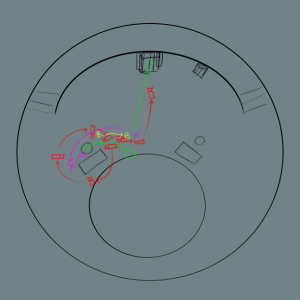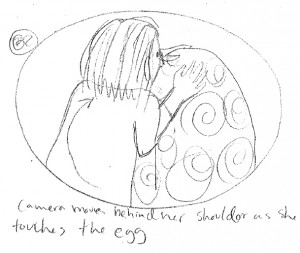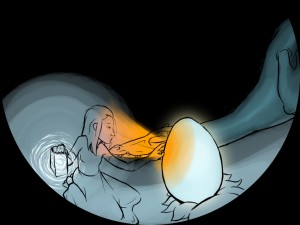When our current team solidified at the very beginning of Morehead Production, we came from very different backgrounds. Jay, a designer and journalist; Pete, a motion graphics and compositor; and myself an animator. The one thing we did all had in common however was we had never done dome work. We have since learned from our mistakes starting out, and taken new steps to refining our processes to making dome shows. Among those changes has been our storyboarding.
Earth, Moon, and Sun
This was our first show that we made, so our storyboards are closer to those for flat screens than domes. We saw there was a challenge of how to draw a storyboard accurately for the dome and tried to illustrate it, however once production and animation started it was clear the boards were very limited and ultimately not very useful.
Magic Tree House
Our second show, Magic Tree House, is an adaptation of the original analog show we had here at Morehead Planetarium. With the Zeiss’ retirement drawing closer, we were tasked to make a digital version of this show. Although nearly every scene was simply updated with better visuals, there was a sequence which we were able to re-imagine. This is where we thought to introduce the idea of drawing the storyboards in the dome itself. We found it was very successful, and there were no surprises when it came time for actual production because the composition of what you saw in the storyboards could translate directly to what we’d do in production. It took a little getting used to drawing with the distortion, but it was ultimately worth it.
Solar System Odyssey
After the success of storyboarding in the dome for Magic Tree House, it made the most sense to continue that practice with Solar System Odyssey. A challenge presented itself however, which was the element of a character driven show. In all our previous productions, there were either a small appearance of one character, or no characters at all. Solar System Odyssey had a staggering three characters on screen at nearly all times. It was because of this that we had to think and draw not only where the characters are on the screen, but also where the camera is going to give the best staging direction for our characters. This was where we introduced the idea of our ‘dance chart’, which we would make for each scene with characters. I also called it the Law and Order effect (in respect to one of my favorite shows on television).
The Longest Night
Advances and evolutions we’ve been making in storyboard development took a strange turn for this show, The Longest Night. Not only was it to be our first show with significant amounts of live action in it, but it would be a collaboration between us and Paperhand Puppet Intervention. There were plenty of challenges already with storyboarding a hybrid of live action and digital environments, but added to that is taking the script and boards they drew and adapting it for the dome.
This is an example of one of the boards that Paperhand created before it was taken to the dome. We could get an idea of what was wanting to be seen, but we needed to be able to see it on the dome to get a better sense of scale and placement of the characters and environments. Using what we learned from shows in the past and adapting the dance chart to include ‘real world’ camera and ‘digital’ camera placement, we came up with an example seen here.
As I said in the title, this is our evolution of storyboarding. There will never be an end to the changes we make in our process as we learn and grow in the dome field. We will just keep applying and adapting what we have learned in the past to our work in the future.


